Free Beginner’s Guide To Motorhomes and Camper Vans
Our beginner’s guide to motorhomes and camper vans is chock full of information and links to more detail in other posts in this blog. However if you want to save it and read it at your leisure, please scroll to the bottom where there is a PDF version that you can download.
Free Beginner’s Guide to Motorhomes and Camper Vans
Motorhomes and campers offer the perfect travel balance. They bring you into beautiful, relaxed surroundings while keeping you and your family in a high level of comfort. It’s ‘back to nature’ with ‘at home’ facilities.
If you’re thinking of hiring or buying a motorhome or camper van, this guide is for you. From the authors of the OurTour motorhome travel blog, it’ll quickly get you up to speed on these key topics:
- Types of motorhome and camper van
- The cost of owning a motorhome
- Tips for hiring a camper
- How motorhome systems work
- Advice for your first van road trips
- Finding great campsites
- Staying safe in your motorhome
We can remember buying our first camper from a local dealer a decade and a half ago, like it was yesterday. We knew next to nothing and were very nervous about looking daft!
Since then, we’ve driven tens of thousands of miles across the UK, Europe and North Africa in our camper and motorhomes. We’ve been incredibly lucky to stay in over 1,000 places across over 35 countries (mapped out here) and want to share with you the joy motorhomes have given us.
Over the years we’ve made our fair share of mistakes and learned a ton of lessons. If you’re thinking of joining the motorhome community, we want to help with this beginner’s guide.
Modern motorhomes and campers are very well-equipped. They typically come with a kitchen, wet room, hot and cold running water, fast internet, satellite or streaming TV, comfortable beds and heating. These are all similar, but a little different to their equivalents at home.
We’ll familiarise you with how these systems work.The range of van makes, shapes, sizes, layouts and features is overwhelming when you first start looking. Just pull up Autotrader’s Motorhome section and you’ll see for yourself. As you search you might come across tons of new terms too: A Class, C Class, PVCs, Coachbuilt, Self-Builds, MAM, MTPLM and so on.
We’ll go through all this jargon and then have a look at motorhome life. Afterwards we’ll run through how all the stuff works inside, so you’re better armed at the hire company, dealer, Autotrader or eBay.
The Wonderful World of Motorhomes and Campervans
Freedom, Comfort and Flexibility
Arrive on site in your motorhome and within minutes you’re settled. Crack open a cold drink from the fridge, get the kettle on for a brew, fire up the BBQ, put your feet up and stare at the views or pull on your boots, grab to dog lead and head out exploring, no time’s wasted!
Come the evening maybe you fancy streaming a film on the TV or popping the lights on and poring over your maps and guidebooks. No need to decide the next leg in your road trip just yet, leave it until breakfast over a hot coffee. A comfortable bed awaits first with your own pillow and duvet, and a solid roof over your head to fend off any rain which arrives with the night.
Thousands of campsites await, spread right across the UK. Sited above beaches, by stately homes, on the shores of lakes, next to pubs, in forests, on islands and in the mountains, there’s something for everyone. Got children and a dog? No problem. No more hunting around for rental accommodation, you’ve got your own and your entire party’s always welcome.
If you’ve your own shower and toilet on-board, you’re not reliant on sites with a shower block. Add a solar panel and you’re even more self-contained, no longer dependant on electrical hook-up pitches. This in turn lowers your overnight site costs and even when your chosen site’s pitches with hook-up are all booked, you can still get a space.
Types of Motorhome & Campervan
Motorhomes and campervans are mostly based on commercial vans which have been converted to be lived in. They come in lots of different shapes and sizes as you can see in our review of the different types of motorhome and campervan.
As the bare minimum, they’ll have a bed, cooking hob and a cool box, but the more luxurious have features like a wet room, skylights, fridge/freezer, sofas, table, TV and internet system.
Are motorhomes and campervans the same thing? Erm, yes and no. Many folks use the terms interchangeably, but when people say campervan, they’re often thinking of the iconic VW campervan or its modern equivalent, a Panel Van Conversion (PVC).
Confusingly you can also get larger versions of a PVC, converted from long wheel-based vans. These tend to include a wet room and toilet and are more often called motorhomes.
Most of us think of motorhomes as big white boxes like the one below (which happens to be our Hymer B544 – have a look around inside).
The two main types of motorhome are:
- A Class, made of an entire new vehicle body on a van chassis.
- C Class also known as Coachbuilt, which keep the original cab, windscreen and doors.
If you’re wondering what happened to B Class, join the club. In the USA panel vans are referred to as B Class vans, but not here in the UK. We’ve no idea why not!
Then there’s a whole bunch of other types of ‘van’, from the compact Romahome, to towed ‘fifth wheelers’ and huge American RVs, to expedition vehicles like the MAN-based truck below which we met in Morocco. Even over in North Africa most people travel in A Class, C Class and PVCs, but if another type of van takes your fancy, go for it.
Choosing the Right Van for You
With such a huge range of vans available it can be hard to decide which is the right one for you. Here are a few areas to help inform your thinking, based on the things we considered when buying our motorhomes and folks we’ve chatted with on the road.
First we suggest you think about who will be using the motorhome, where they’ll be using it and what for. If you’re a family who plan to stay on campsites in the UK all the time, you’ll have very different needs to a couple who want to wild camp their way around Europe.
How Much £££?
You can spend anything from a few thousand (for a self-build) up to £300,000 (or even millions if you want a superstar Winnebago). The amount you have available to spend probably won’t restrict which type of van is available though, if you are willing to buy an older van.
In the order we bought them, our vans cost us:
- £9,500 (an Autosleeper Harmony conversion on a Talbot van, from a dealer),
- £10,500 (a 20-year-old Hymer B544 A Class, from eBay), and
- £16,800 (an 18-year-old Hymer B544 A Class, from eBay).
We’ve used the B544s very heavily, travelling tens of thousands of miles across a continent or two. We while we’ve had to do some repairs to them, the cost of those was much cheaper than buying newer, more expensive vehicles.
Used vans at dealers tend to be in the £25,000 to £45,000 range. Buying from a dealer will give you more peace of mind, as they’ll often come with a warranty against some types of fault.
Buying a brand-new van gives you the option to get the exact specification you want, including any extras like solar panels and upgraded leisure batteries. Everything will, of course, work perfectly or be fixed under warranty and you won’t need to get an MOT for three years. You’ll also get one of the cleaner engines available, enabling you to access low emission zones across Europe, if that’s your aim. Brand new van prices start around the £50,000 mark.
Running Costs
Don’t forget that once you’ve bought your van, you’ll need to budget for annual running costs (these figures are rough estimates folks):
- Depreciation – maybe 10% a year for new vans, 5% for older ones
- Insurance – from £250 to over £1,000 for full-timing across Europe
- Road Tax – around £280
- MOT – around £55
- Service – around £250
- Habitation Service – £200
- Repairs – £500 (just replacing a side window can cost this on an older van)
- Consumables – tyres/exhaust/batteries – £300
- Fuel – will depend on how far you travel
- Overnight Fees – campsites etc.
Weight Matters
Each motorhome or campervan has a legal weight limit, referred to as the MAM (maximum authorised mass). The vehicle can’t legally weigh more than this, including passengers, pets, water, diesel etc.
The MAM will be shown on a sticker or plaque on the motorhome, sometimes on the side, sometimes under the bonnet (ours is shown in both these places).
Your license will determine the maximum van weight you can drive. If you got your full UK car driving license before 1 January 1997, you’ll automatically have a C1 license, and can drive any van up to 7,500Kg. If you got your license after that date, you’ll have a C class license, and you’ll be limited to vans weighing up to 3,500Kg, unless you take an additional driving test (www.gov.uk/guidance/driving-a-van).
Some very large vans have an implausible 3,500Kg weight limit. These vans probably have a very low payload and it might only be possible to legally drive them with very few possessions or people inside.
As well as limiting the vans you can drive, there are a few other weight-related bits and bobs to be aware of:
- Legally each axle also has a limit, keep this in mind if you plan to keep a moped in the motorhome’s garage.
- Speed limits across Europe are often lower for vans over 3,500Kg.
- Some countries in Europe require vehicles over 3,500Kg to pay tolls per kilometre driven using an electronic box.
- Some bridges and stretches of road have weight restrictions.
- If you plan to tow anything, check the motorhome’s tow weight and your license categories.
- When you turn 70 you will need a medical to drive vans over 3,500Kg.
If your van is overweight you risk being fined by the police, or worse not being able to stop in the event of an emergency, or a long downhill descent.
Belted Seats and Berths
You’ll need to make sure your van has enough seat belts or child-seat lock points to cater for your entire party. If you want to use child car seats, make sure the belted seats are full 3-point belts and not just lap belts.
You’ll also need to be sure the van has enough comfortable beds (berths) for everyone. Ideally test the bed out before hiring or buying, even if you just whip your shoes off and try lying in the bed to see if you can stretch out.
Overcab beds and bunks can help to keep the living space accessible if not everyone goes to bed at the same time. Think about bedtime. Does the van layout allow the adults to comfortably stay up while the kids are in bed? If you’ve a family, are there doors or curtains to offer privacy at bedtime?
Should You Hire or Buy Your First Motorhome?
Before you dive in and buy a motorhome, you might want to hire one instead. Some of the situations where it would make sense to hire instead of buy are:
- You want a one-off holiday in one, especially so if it’s touring a distant destination like Norway, New Zealand or Iceland.
- You want to try before you buy to see if this lifestyle is for you.
- You’re not sure what make and model you want to buy, renting allows you to get a feel for what it’s like for you personally to drive, park and live in a particular size, weight and internal layout of camper.
- You don’t plan to use the van for more than a few weeks a year. Motorhomes are fantastic vehicles, but they’re not cheap. Having one sat around doing nothing for 48 weeks of the year is an expensive way to holiday. Before committing to buy, we’d get a calculator out and add up costs for finance, insurance, road tax, MOT, servicing, consumables, repairs and depreciation. Suddenly rental costs don’t look quite so high.
- On the flip side, you may want to buy rather than hire, as you prefer the flexibility to head out whenever you want. You might want to modify the van, adding more locks, lights, different upholstery, decals, curtains, anything really. It is, of course, completely up to you whether you decide to hire or buy – just have fun folks!
Check out our guide to hiring a motorhome or campervan for hints and tips on choosing the right van to hire and heading out on your trip.
Rough Costs for Motorhome Hire
We did a couple of online searches for ‘motorhome hire’ to get some quick quotes. We aren’t recommending any of the companies below, but these are just to give you an idea of costs.
Mcrent.eu are Europe’s largest motorhome hire company. You can hire a four-berth, four-seat 3500Kg motorhome for a week in early August 2021 for roughly £2,000. Outside school holidays in early September that dropped to £1,300.
On top of the rental price you may also be charged for ‘extras’ such as additional drivers, insurance, bedding etc. For one additional driver, bedding and towels for four, outdoor table and chairs, and insurance for Europe Mcrent.eu charged an additional £530 on the example hire we tried.
How Motorhome Stuff Works
Modern motorhomes are a wonder. It’s entirely possible to live full-time in them, we have, and many others do too. Their facilities don’t all work like you might be used to back home though. We’ll go through each of them below, but if you want more detail, check out our motorhome facilities explained blog post.
Electricity – Keeping the Lights On
Unlike in a house, there are a couple of different types of electricity in motorhomes: 230V mains AC and 12V leisure battery DC. They’re outlined below.
230V Mains AC Power
Once you’ve used a special cable to connect your van to the 230 Volts mains (called ‘hooking up’), the three-pin sockets in your van will look and act like those at home. If you aren’t hooked up, they won’t work.
12 Volt DC Power
Motorhomes are equipped so you don’t need to hook up for basic electrical needs. In addition to the van’s starter battery you’ll have one or more 12 Volt ‘leisure batteries’. These store power for use in the habitation area of your van: the lights, heating fan, water pump, etc. You can monitor how much ‘juice’ you have in your leisure batteries on a control panel inside the van as you don’t want to let them run too low (unless your van has a new super-duper Lithium-Iron battery, then you can safely discharge it all the way down to 0%).
230V AC to 12V DC Using an Inverter
If you want 230 Volts electricity inside your van without being ‘hooked up’, a box of electronics called an inverter can do this for you. The box will have one or two 3 pin sockets which you can plug-in your mains-powered stuff into.
We have a small 300 Watt pure sine inverter pictured below, which is enough to charge our laptops, watches and phones, and run hair clippers.
Recharging Leisure Batteries
There are a few ways to recharge your leisure battery:
- By hooking-up.
- By driving.
- Using the power of the sun with Solar Panels.
- With a generator.
Gas – Cooking and Cooling
Bottled butane, propane or LPG (a mixture of the two) allows you to cook on your hob and oven, get hot water, blow warm air around your van and even, weirdly, keep your fridge cold.
The gas is stored in liquid form (under high pressure) in bottles in your van. The bottles are connected to a device called a ‘regulator’, which reduces the high pressure down to a level it can be safely burned by the appliances in your van.
When a Calor gas bottle runs out, you take it back to a supplier who will sell you a full bottle. You’ll need to close the bottle valve by hand, then use a spanner to remove and re-attach the new bottle.
Some vans, typically those used for long-term touring, have self-refillable LPG gas systems. You can refill these at Autogas/LPG refill stations. These special pumps are usually found at petrol stations in the UK and abroad. LPG bottles and tanks have a built-in safety protection device which stops the flow of gas when they’re 80% full. Calor bottles don’t have this feature, so it’s important not to try and refill Calor bottles yourself. Our van has a self-refillable LPG gas system from Gas IT, shown below.
Cold Beers and Ice Cream – The motorhome fridge
They’re generally not huge, and the freezer spaces are sometimes tiny, but the feeling of being on-site, pulling a cold drink from your van’s fridge on a hot day is pretty great.
Most vans have ‘three-way’ fridges, so called because they can run on three power sources:
- On 230 Volts mains when you’re hooked-up.
- On bottled gas when you’re parked but not hooked-up.
- On 12 Volts when you’re driving.
A few vans have ‘compressor fridges’ which work on 12 Volts when you’re parked but these are relatively rare. The three-way fridges in most vans will only work on 12 Volts when your van’s engine is running.
Heating – Hot Water and Warm Air
Lots of vans have water and air heaters installed, which typically run on gas. Some can also use mains electricity, and a few are powered by diesel. These either provide instant hot water when you open a tap and turn it to hot, or you’ll need to switch them on a few minutes before you want the hot water.
In cooler conditions you can also use your heater to blow warm air through ducts out into the living space and wet room. With a well-insulated van you’ll be kept toasty warm even in blizzard conditions.
Two Types of Water: Fresh and Grey
Fresh water is held in a tank inside the van. Many vans have about 100 litres of it. The water taps have micro-switches installed which turn on a 12 Volt submersible water pump when you open them. The pump pushes water from the tank out through the taps. Some motorhomes have a non-submersible electric pump which starts automatically when it detects a tap has been opened.
You can monitor how much water you have left using a meter on your van’s control panel. When you want to top it up, you can either drive to a tap and use a hose, or use a water carrier to bring the water to your van. Either way you’ll use a filling point on the outside of your van to get water into the tank.
Waste water flows down the plug holes into a ‘grey water’ tank. This also tends to hold about 100 litres. To empty the grey tank, you’ll need to drive over a suitable drain and then open a tap on the outside of the van to let the used water flow away. Or you can use a bucket if you don’t want to move the van or can’t get over the drain.
As well as our blog post about motorhome facilities, we also have a post with more details about fresh and grey water.
Black Water: The Chemical Loo
Along with fresh and grey water tanks, most motorhomes and many campers have ‘black water’ tanks too. These don’t really hold water, it’s the contents of your chemical toilet! This is either in a plastic cassette located under the loo or as part of a Porta-Potti.
If you always stay on campsites with toilet blocks, you won’t need to use the chemical loo if you don’t want to. Some folks opt to only use it for liquid waste: number ones.
If you do use the loo, you can add a blue chemical after you’ve emptied it to keep it smelling fresh(ish) until you next empty it. You can also get a pink-coloured chemical, which you add to your loo’s flush tank (if it has one) to keep the bowl smelling nice. You can get green liquids too, which are kinder to the environment.
You’ll need to use either a toilet or an ‘elsan point’ to empty your loo, which flows into a septic tank or the sewers. You can read more in our blog post about motorhome loos.
Watching TV in Your Motorhome
You can get TV in your motorhome and with a 12 Volt set you don’t even need to be hooked-up to the mains to watch some great telly!
There are a few ways to watch TV in your van including:
- With a roof-mounted or tripod satellite dish.
- Using a terrestrial TV digital aerial on the roof.
- By streaming TV and films over the internet.
- By watching DVDs.
- By connecting your laptop and watching offline programmes from iPlayer.
We’ve also written a blog post going into more detail about the various ways to get TV in your motorhome. We currently have a satellite dish and a built-in Freesat receiver in our TV but tend to stream most of our content over the internet. Check out our blog post giving details of our motorhome TV set up with an Amazon Fire TV Stick. With fast 4G connections and unlimited data SIMs (see below) we can do this almost everywhere.
Internet Access
We can all get internet fast enough to stream TV and make video calls pretty much everywhere these days. 4G mobile networks are widespread, easily accessible with a smart phone or personal WiFi hotspot device (sometimes called a MiFi or a router).
By adding a roof-mounted internet booster antenna to your van, you can further increase the places you can get a strong 4G signal. Also, using an unlimited data SIM means you don’t have to worry about the many gigabytes (GB) you’ll go through with such a fast connection.
Some campsites include WiFi in the price of your pitch, but it can be too slow for streaming TV. You can get booster antennas, so it works more quickly if you’re some distance away from the WiFi access point.
Enjoying Your First Motorhome Road Trip
You’ve bought or hired your first motorhome or campervan and are ready for your first trip out. It will likely be a mixture of excitement and trepidation! Here are some of our best tips to keep your stress levels down and pump up the fun. You might also want to have a quick look over our survival guide for your first motorhome trip, for a few extra tips.
Motorhomes Don’t Drive Like Cars, Take it Easy!
Even if you’re driving a relatively small campervan, it won’t drive quite like a car. Crank the size up to 3.5 tonnes or more of motorhome, and you’ll notice much more difference, things like:
- Motorhomes feel wide! They are wide, but not as wide it might feel when you’re sat in the driver’s seat for the first time. We suggest using a quiet road or car park to get a feel for your road positioning.
- Your motorhome won’t slow down as quickly as your car when you brake. Leave a bigger space ahead of you than you would in a car and start braking much earlier. If you need to brake hard expect things inside cupboards to move and be prepared for stuff to fall out when you open them.
- Cars can’t see past you, so are more likely to caught out with heavy braking. Also indicate early if you need to pull out, to pass a cyclist for example.
- The longer your van, the more you need to delay turning into junctions. If you don’t, the back end of the van will go up the kerb.
- On motorways, large overtaking vehicles will ‘push’ and then ‘pull’ your van as they pass. Try not to over-compensate with your steering.
- If you have a left-hand drive van in the UK, having a passenger look up the road for you is helpful, especially when you need to overtake or pass obstacles parked in your way.
Our overall best advice is this: don’t panic. You’ll probably feel you’re holding up the traffic sometimes, we always do. Take it easy, don’t go any faster than you’re comfortable with. Pull over where it’s safe to let the faster traffic past, or go all the way around a roundabout – slowly.
Finding Great Campsites and Other Overnight Locations
Where are you going to stay in your new home on wheels? For the first few nights at least, being on a campsite near to your home is perhaps the best idea.
That way you can try hooking your van up to the electricity, can practice using ramps to get level, can try out your internet and TV systems and so on. And if needs be, you can nip home to get stuff you’ve forgotten (we always manage to forget something, even with a packing checklist!).
Here are a few ways you can find places to stay in your campervan or motorhome:
- Books – search amazon.co.uk for ‘campsites uk’ and you’ll be shown all the best-selling campsite books they have.
- Apps and Websites – search google.co.uk for ‘campsite’ and click on Maps, and you’ll see many of the sites around you, with photos and reviews. Or websites like ukcampsite.co.uk, pitchup.com and searchforsites.co.uk are all very helpful. The park4night.com website and app is also very popular but is more focussed on off-site parking than campsites.
- Club Sites – If you join the Camping and Caravanning Club (www.campingandcaravanningclub.co.uk) or the Caravan and Motorhome Club (www.caravanclub.co.uk) they have their own websites mapping out their sites. Look out for CLs (certified locations) and CSs (certified sites), which are small sites with fewer facilities and lower costs.
- Business Sites – if you’re happy using all your van’s facilities, then no-frills locations like pub car parks and farm shop parking areas open up. Some charge a fee to use their parking overnight, while others allow free overnight stays on the unspoken assumption you’ll buy something from them. Check out the Brit Stops scheme which lists over 1,000 ‘hosts’ (typically pubs) across the UK and Ireland which offer free parking (www.britstops.com).
- Word of Mouth – ask your friends and family! Someone’s bound to have enjoyed a campsite or two in their time.
Check out this blog post for more details about how we find places great motorhome campsites and stopovers in the UK.
Planning the Best Motorhome Driving Routes
Wherever you choose to go, check the route there to make sure you’re not trying to squeeze down narrow country lanes on your first drive out.
Here are a few tips for planning good driving routes for a motorhome:
- Maps – paper maps are great for checking an overall route. Car satnavs will often take you down small roads to save a few miles. You may want to drive further, sticking to motorways and A roads rather than, narrower B roads.
- GPS – you can get ‘truck’ satnavs for under £80 which let you put in the dimensions of your motorhome. These plot better routes than car satnavs, avoiding low bridges and sticking to wider roads. We highly recommend still checking the route on a paper map though!
- Ask the Site – sites, like the one above, have a narrow entrance or pitches which are tight to access. If you’ve a larger van it might be worth calling and asking before you book.
Assume it will take you longer to get to a destination in your motorhome than in a car. They’re not as quick to accelerate and are hard to drive quickly on winding roads. Some satnavs let you input a maximum speed. If you do this to get a more realistic arrival time, they might deliberately avoid faster, wider roads which you really want them to include.
If you want an idea of how we have learned the hard way about planning a route, check out our 10 scariest motorhome driving experiences.
Avoiding Damage When Driving Away
Like airline pilots, many motorhome owners have a pre-departure checklist. Each time they set off from home or their motorhome pitch, they run through the list item by item, before starting to drive.
Over time you may want to develop your own list or approach, maybe starting with something like this:
- Nothing on table or counter tops?
- All cupboards and doors locked?
- Hook-up cable disconnected?
- Gas bottles turned off?
- Fridge switched to12 Volts?
- Levelling ramps stowed?
- Steady legs lifted up?
- All external lockers secure?
- Skylights and windows closed?
- Satellite dish or TV antenna lowered?
- Bikes and bike rack secure?
- Habitation doorstep stowed?
- Trailer secure (if you’re towing)?
We also check around the ground we’ll drive over for any holes, rocks (or kittens – it’s almost happened to us) before driving. We also have a look above the van for low tree branches and the like.
Arriving on Site and Getting Settled on Your Pitch
After arriving at your site, it’s time to getting checked in, into your pitch, hooked-up and level with the kettle on! Each site will operate differently, but this is roughly what to expect:
- Larger sites have barriers at the entrance. Look for the indicated place to park and wait to access the site, while you check in.
- Some sites have introduced automatic check-in, so your numberplate is read and the barrier opens.
- You may still need to go to reception to tell them who you are. If you don’t have a reservation, they’ll check if they have space for you.
- Some sites will let you choose your own pitch. Many will have a pitch number for you. They’ll let you know where the pitch is, and maybe give you a map. It’s worth asking at this point where the nearest hook-up point, water tap, bin and elsan point/motorhome service point are.
- Drive to the pitch and decide whether you want to reverse in or face outwards. Most sites ask you to park so that your habitation door isn’t facing your neighbours, to give you both space and privacy.
- If the pitch isn’t level, use levelling ramps to get the van level. This is a bit of an art. Don’t try driving forwards up a slope with the ramps in front of the wheels, put them behind the wheels and slowly reverse onto them instead.
For many vanners, us included, getting onto our pitch can be the most stressful part of ‘moving day’. We sometimes see couples shouting at each other as they try and get the van positioned and onto the levelling ramps. We get it, we’ve done the same, everyone’s a bit on edge after a long drive.
One way we’ve found to reduce the stress-levels is for one of us to get out of the van and use exaggerated hand signals to tell the driver when to reverse, when to turn left, how close we are to the tops of the ramps and so on. We don’t try and shout over the engine noise, we do it all in silence. We’ve never seen anyone else do this but hey, it works for us!
Avoiding Getting Stuck
Unless you have a tractor to hand to tow you out every time, the best bet is to think about where you are going to park to try to avoid getting stuck. Avoid parking on soft ground, or downhill on a grassy slope when it’s rained, or if rain is forecast. Heavy motorhomes don’t much like mud. We’ve ‘Mud and Snow tyres’ fitted to ours, and we’ve a set of traction mats, but after the above incident we avoid grassy slopes like the plague.
Motorhomes and Pets
Being dog owners drew us to campervans in the first place. With our own van we didn’t have to worry about hotels or B&Bs not allowing pets. Charlie, our unimaginatively named Cavalier King Charles Spaniel travelled with us for years. We like to think he loved being so close to the rest of his pack and enjoyed lots of good sniffs.
We were lucky as Charlie was chilled out about travelling in a van. He was used to being in the back of the car, and this seemed to translate well to the motorhome. Not all pets are so relaxed, and the last thing you need is a howling dog or manic cat (yep, lots of folks take their cats) while driving.
Here are a few more tips for travelling in the UK with your pet dog or cat:
- Not all campsites allow pets. Check before you pay a deposit.
- Some sites allow dogs, but not certain breeds.
- Unless you’ve a fence around your van, you’ll likely need to keep your pooch on a lead while on-site.
- We’d take our pooch for a long walk before driving and try to limit drives to a couple of hours at a time.
- Have a packing checklist for your pooch so you don’t forget their lead, bed, water, any medication, treats, tick remover, poo bags, comb, toys, etc etc! Charlie had his own section on our motorhome packing list.
If you plan to travel abroad with your pet, you’ll need either a Pet Passport (if you live in Northern Ireland) or an Animal Health Certificate (in Britain). These require a microchip and rabies inoculation. Talk to your vet as early as possible to make sure your pet’s ready to travel. When you return to the UK (with a dog, this doesn’t apply to cats) you’ll need to visit a vet abroad to get a worming treatment done. See this website for more information: www.gov.uk/taking-your-pet-abroad.
We’ve also got lots of hints and tips in our blog posts about taking your dog abroad in a motorhome and travelling in a motorhome with an old dog.
Keeping You and Your Van Safe and Secure
Staying Safe Inside Your Van
Motorhomes and campers are fun and enjoyable ways to holiday, but they do have gas and electrical systems, which can be potentially dangerous if not properly maintained.
Here are a few key tips for staying safe while you’re in your van:
- Fit a Carbon Monoxide (CO) and smoke alarm (we have a combined alarm).
- Install at least one fire extinguisher. Our van has two of them, plus a fire blanket in the kitchen.
- Get a professional to check the gas system once a year.
- You can get a ‘habitation check’ done, which will check the gas and electrical systems, look for problems with damp and so on. Some warranties require proof of these checks.
- While driving, don’t have anything loose in the habitation area which could fly around and hit you in the event of sharp braking or a crash.
- Unless your van has an auto cut-off valve (most don’t), turn the gas off at the bottles before driving in case an accident severs the lines.
Preventing Thefts
No-one wants their motorhome to be stolen or broken into. There’s a huge range of locks and alarms available to try and prevent this. Some are built-in by the manufacturer, some you can have fitted to your van (trackers, additional alarms etc) and others you can fit yourself (steering and wheel locks).
We’ve never found a formal study of motorhome security, based on figures released by the police or insurance companies for example. But we have travelled widely ourselves and spoken with lots of other motorhomers. Also, motorhome insurance isn’t wildly expensive, all of which leads us to believe that motorhomes are generally a safe and secure way to travel.
From our travels and discussions we’ve come up with a few security rules we apply when travelling.
- Campsites are the most secure overnighting spots. Although bits and bobs left out might be pinched, we hear of very, very few problems with sites.
- When you’re not on site, be careful where you park. Break-ins seem to happen most on busy city streets and in the car parks of tourist attractions.
- Use your intuition. If a parking place doesn’t feel secure, either one of you could stay in the van (while shopping for example), or you should look for somewhere else to stay. You need to feel safe enough to sleep.
- Always lock the van doors and put the alarm on when you’re not in the van. Your insurance may be invalid if you don’t do this and the van’s broken into or stolen.
- Never leave anything on display when you’re not in the van. Some people choose to leave their blinds open once everything’s hidden. We opt to close ours.
- Bikes on rear racks are an obvious target. Lock and cover them so thieves can’t see them. Our bikes are worth about £50 each, which helps us to not worry too much.
- No motorhome is 100% secure. Professional thieves can bypass many security devices. Less skilled villains will simply prise open a plastic window or a door. So don’t take anything with sentimental value with you. It would be a pain if it did get stolen, but everything is replaceable, so it’s not the end of the world.
- If you’ve a smart phone, photograph your driving licenses, insurance certificate, breakdown cover details and so on, and email them to yourself.
Mothballing Your Van
Lots of us park our vans up for long periods without using them much, or at all, particularly over winter.
Here are a few tips for mothballing your van, keeping it in good condition while you’re not using it, you can also find lots more detail on our blog post about how to mothball your motorhome for winter:
- Drain all the water from the habitation area of your van. In freezing conditions any water left in the van might damage the water heater, tanks, pipes or taps. We’ve made this error, and it can be expensive to fix.
- Keep your starter and leisure batteries topped up or you might find they’ll no longer hold charge when you come to use the van. If your van is parked outside and has a solar panel, this might be enough. Ideally hook up your van to the mains periodically, to charge the batteries back up to 100%.
- Close all the blinds. This stops the sun bleaching your upholstery.
- Move the van from time to time. This prevents the same area of each tyre holding all the weight of the van while it’s sat still.
- While you’re in the van, check for any damp patches, especially around skylights or windows. If you find any water ingress, it’s best to sort the problem as soon as you can. Here’s how we solved a problem with a leaking skylight.
- Rodents love vans in storage. Vans have safety vents in the floor to allow any leaking gas to escape. These have metal grills to stop rodents getting in. Don’t block these up but check to make sure you’ve no tiny holes a mouse could crawl through.
We hope you have found this guide useful. Please feel free to download and share our free beginner’s guide to motorhomes and camper vans as a PDF.
Enjoy this Guide? Get Much, Much More!
If you’ve found this guide useful, it’s just a taste of all the hints and tips gleaned from tens of thousands of miles of motorhome touring in our book The Motorhome Touring Handbook!
We update the book at least once a year, so it’s always up to date. The book has tons of positive reviews and is available in paperback or eBook format on Amazon. To look inside the book, click on the link below:
The Motorhome Touring Handbook, at Amazon
The Authors
Hi folks, we’re Julie and Jason Buckley.
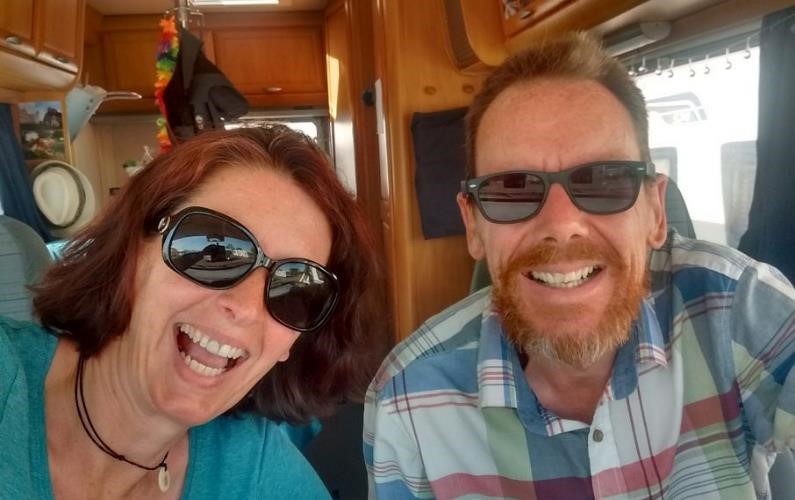
We quit our jobs aged 39 and bought an aged Hymer B544 we called Dave. Ready for adventure, we headed for Calais and turned right.
Two years later we’d explored much of Europe and North Africa and were keen for more, but the funds had finally run out. We were forced home and back into the office (boo, hiss).
A further two years later we’d replenished the war chest and were off again (hooray!). This time we were in a slightly newer motorhome we called Zagan. Huh, weird name? It’s the town in Poland near the prisoner of war camp featured in The Great Escape. Zagan’s our own great escape.
We’ve now spent over a decade touring in campers and motorhomes, travelled tens of thousands of miles and slept in over 1,000 places in more than 35 countries. It’s been an absolute blast folks, and we hope you get to enjoy the same experiences we’ve had over the years.
You can follow us at any of these, and we’d love to hear from you:
- Subscribe to emails on this blog
- Facebook: www.facebook.com/OurTour
- Twitter: twitter.com/OurTourBlog
- Instagram: www.instagram.com/ourtourblog
- YouTube: tinyurl.com/ourtouryoutube

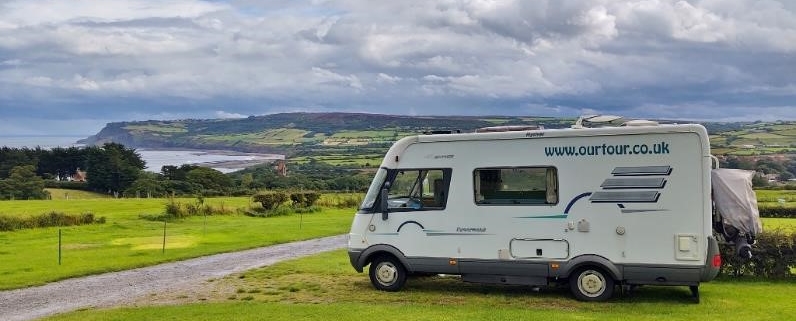
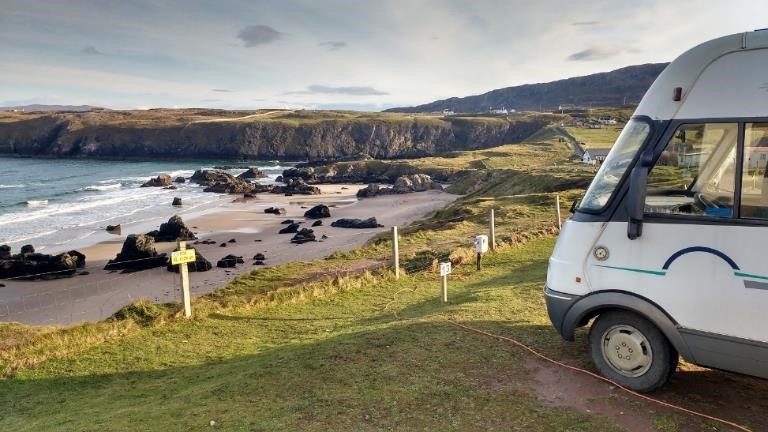
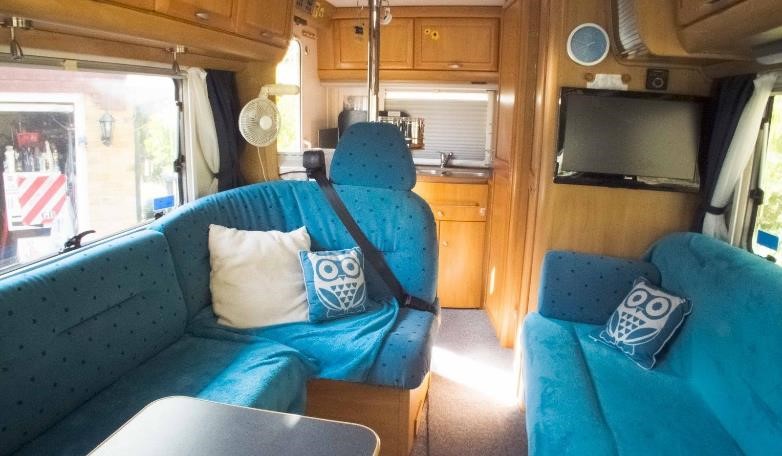
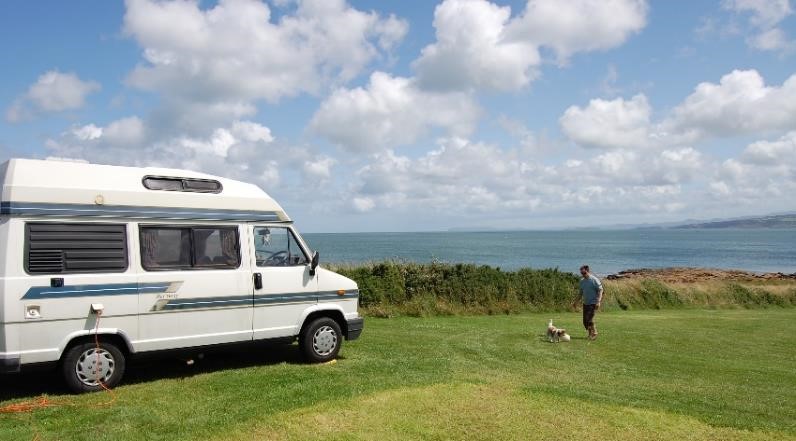
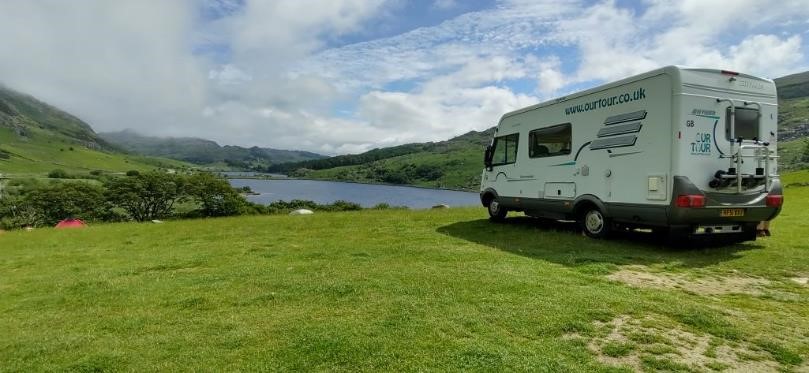

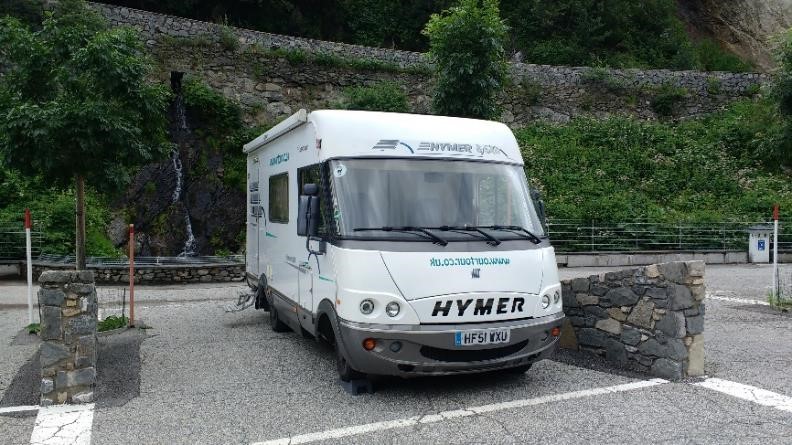
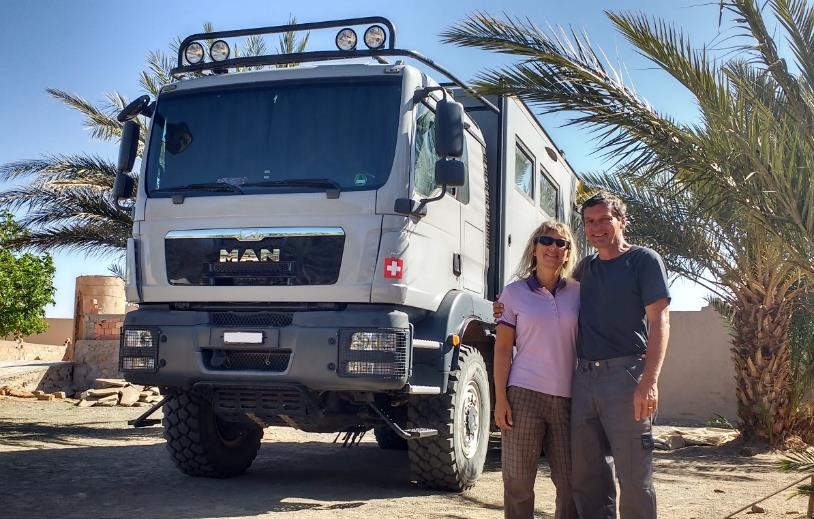
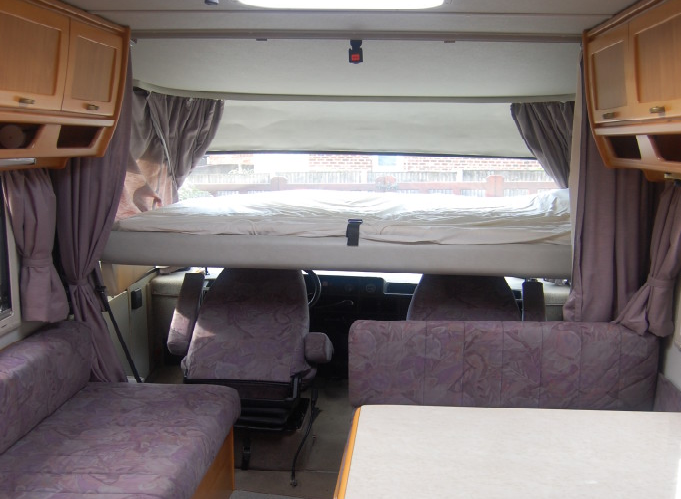
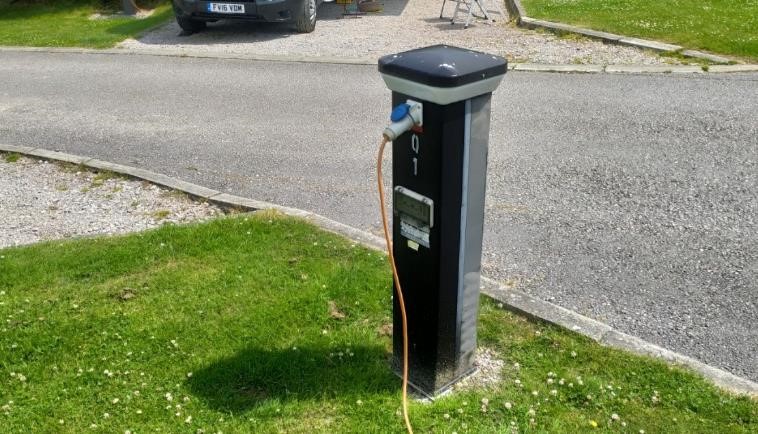
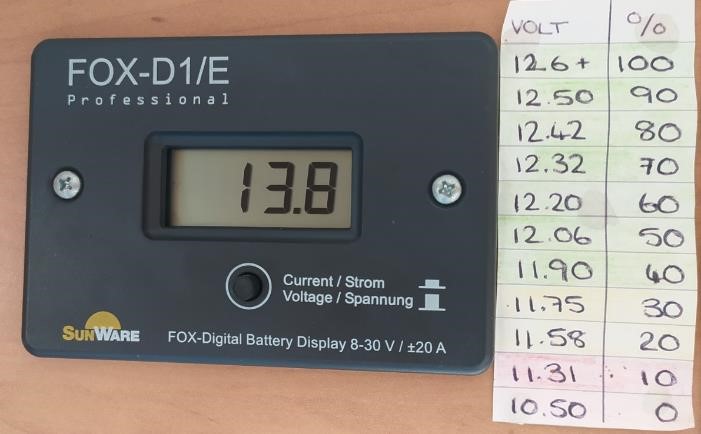
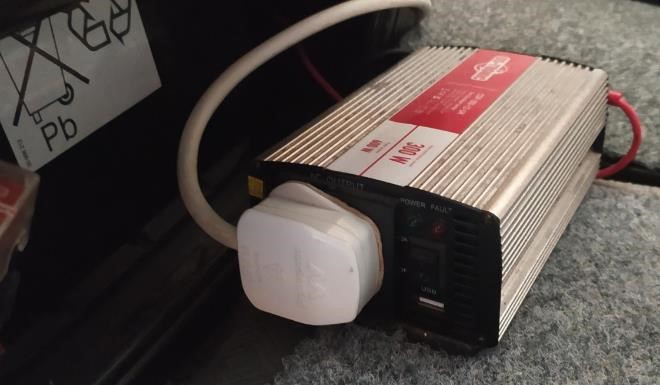

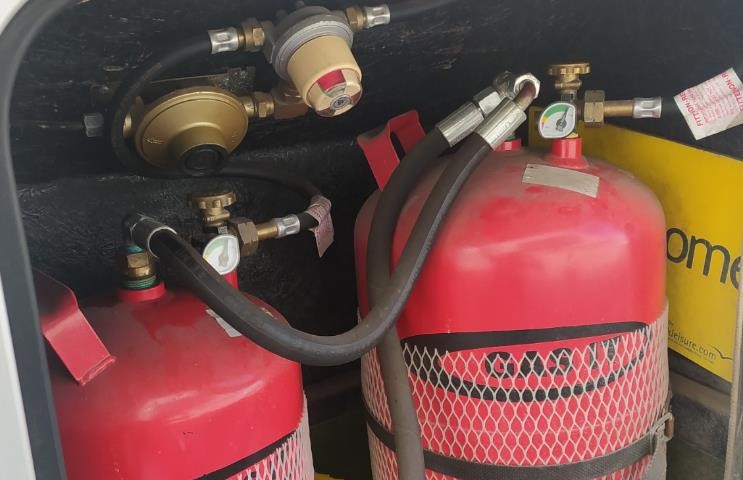
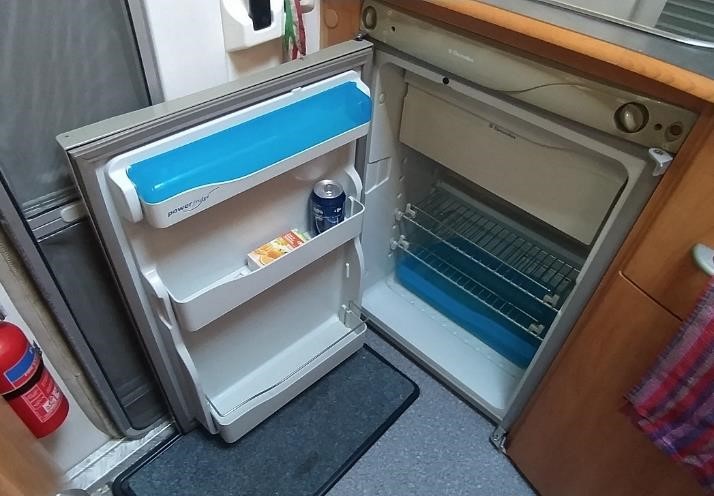
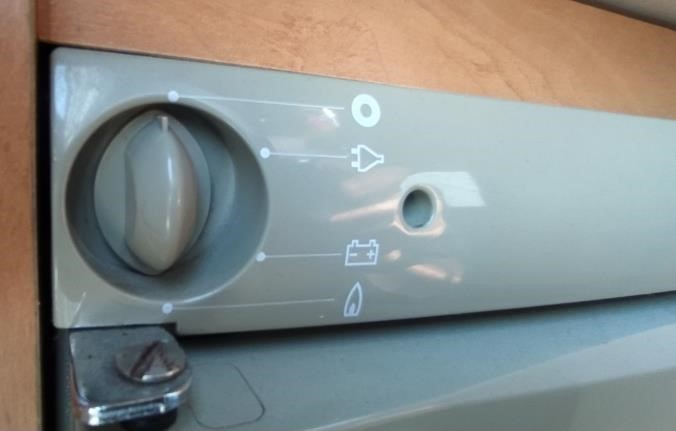
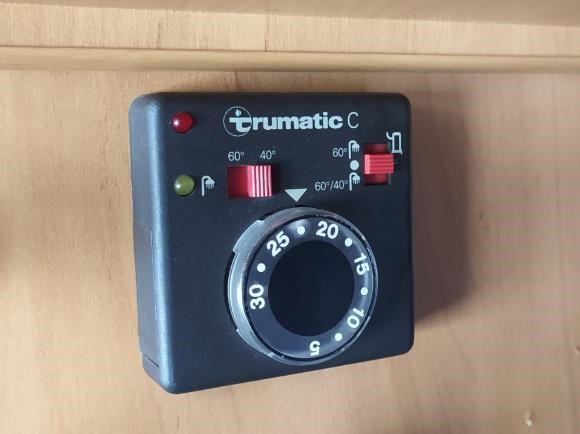
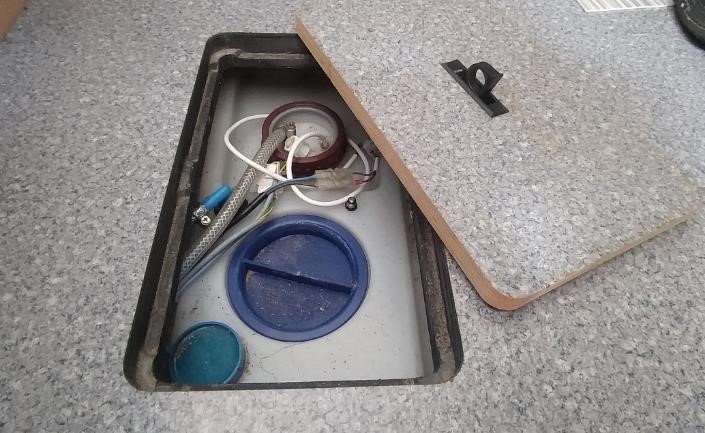
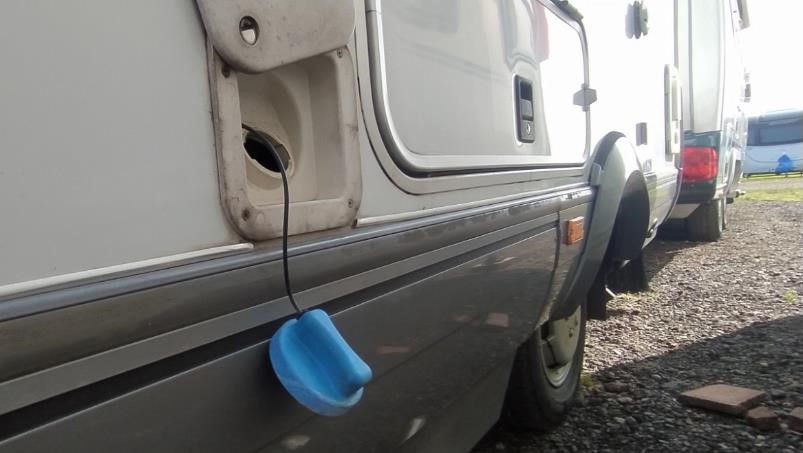
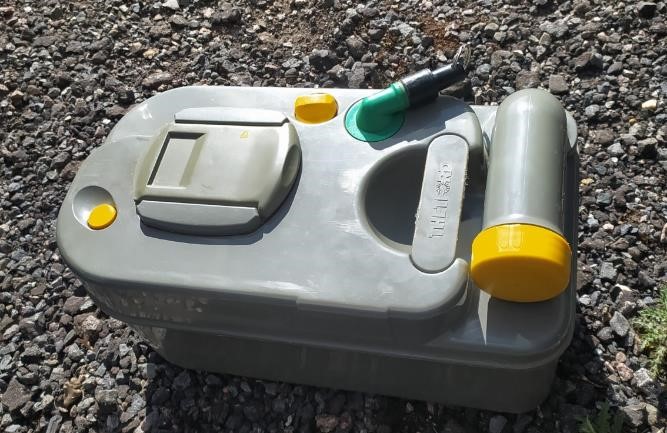


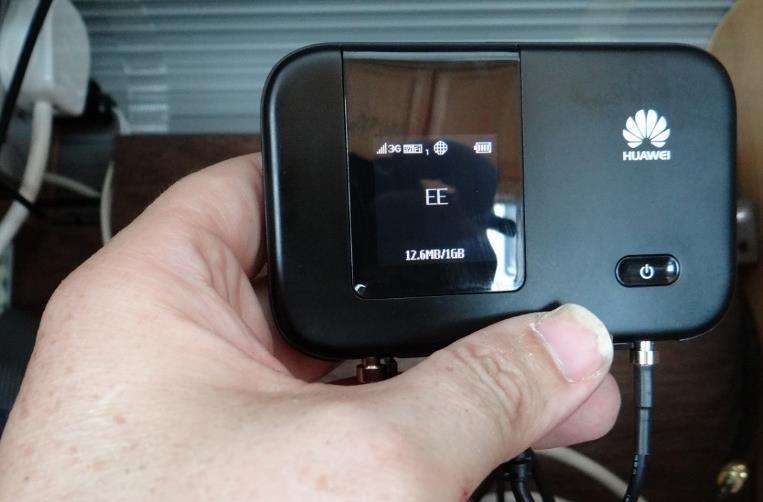
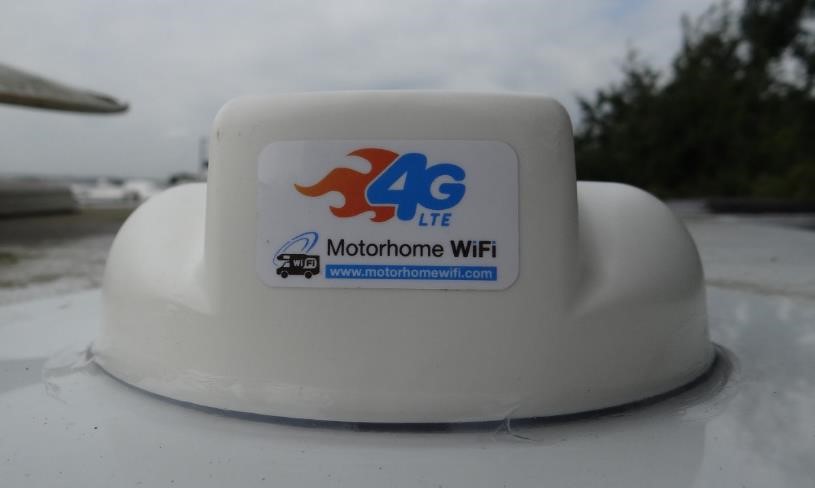
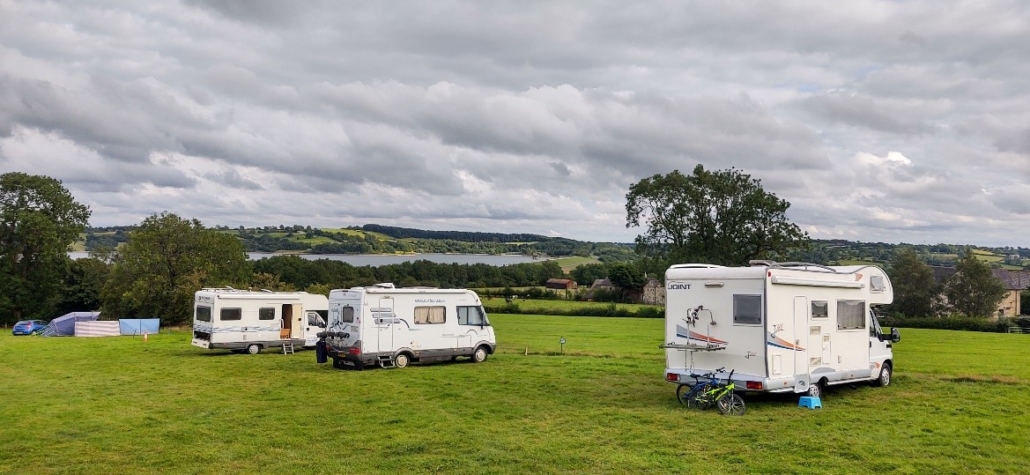
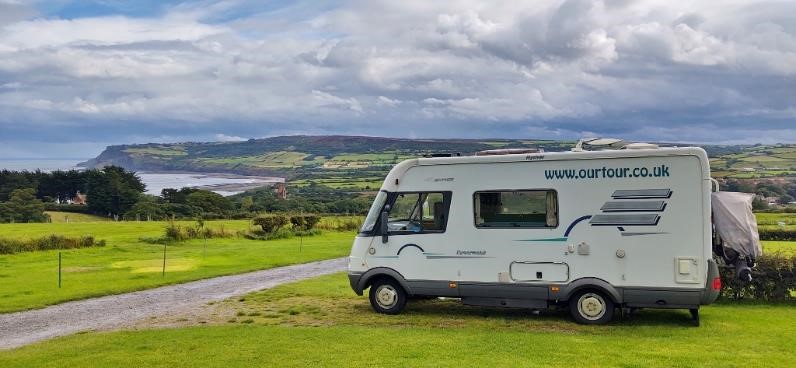
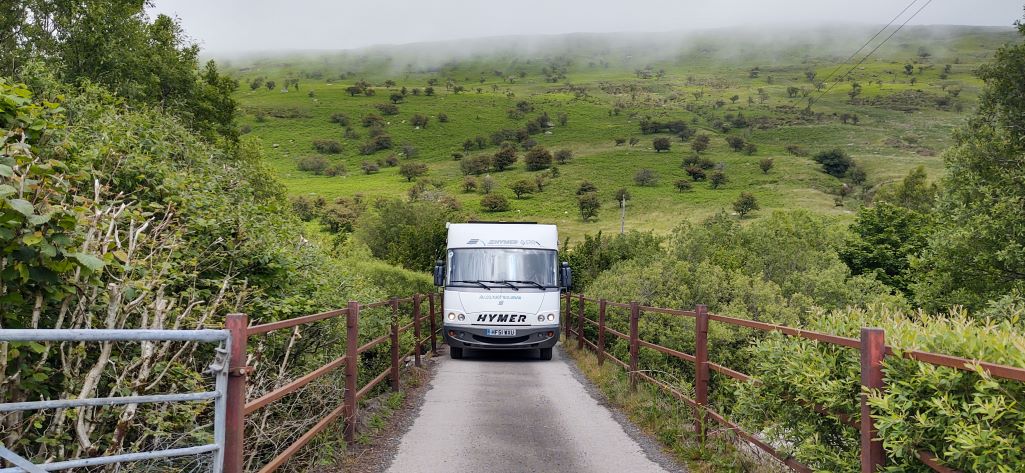

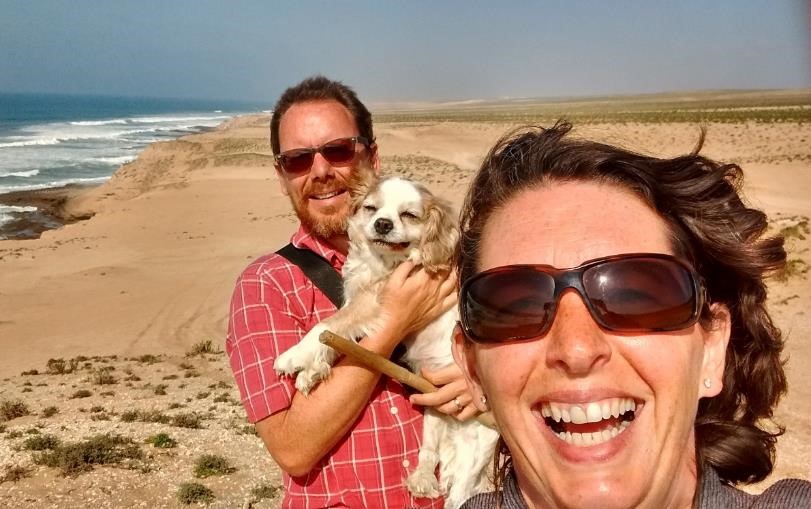
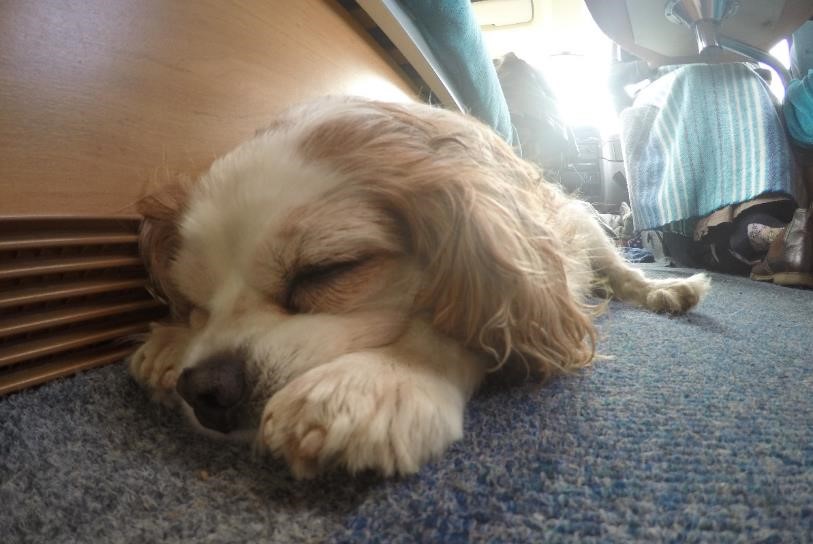

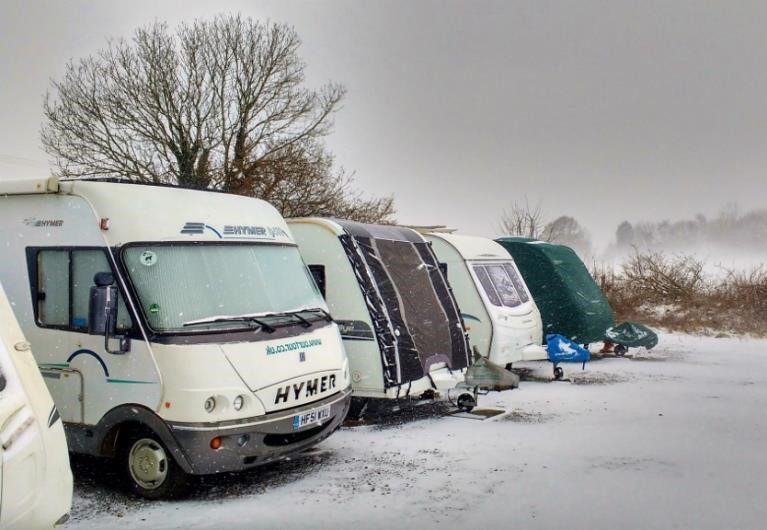
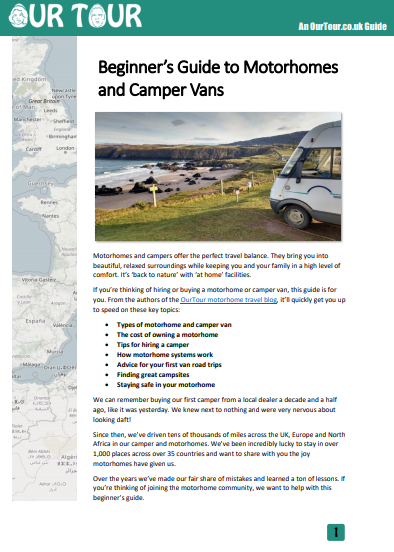

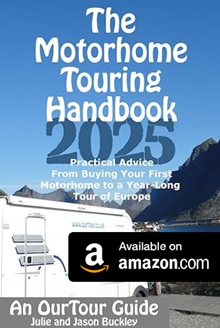
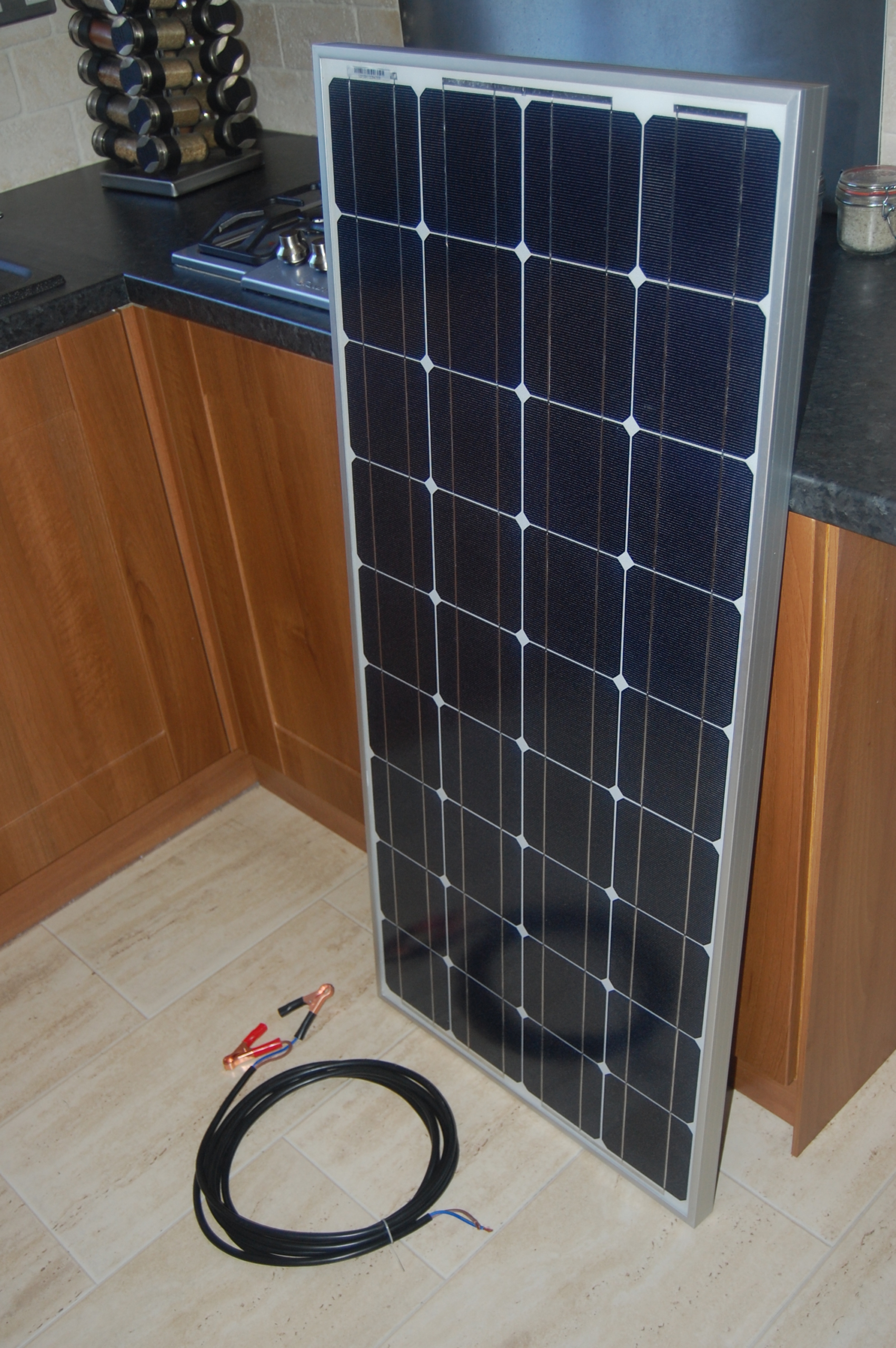


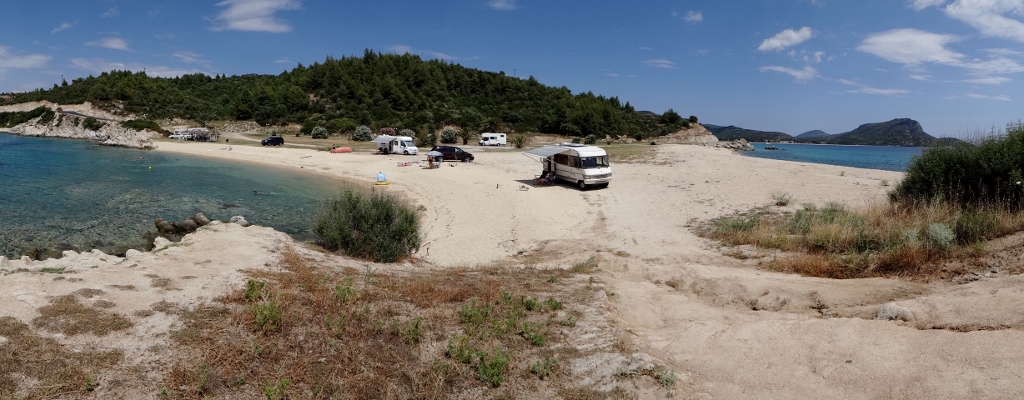

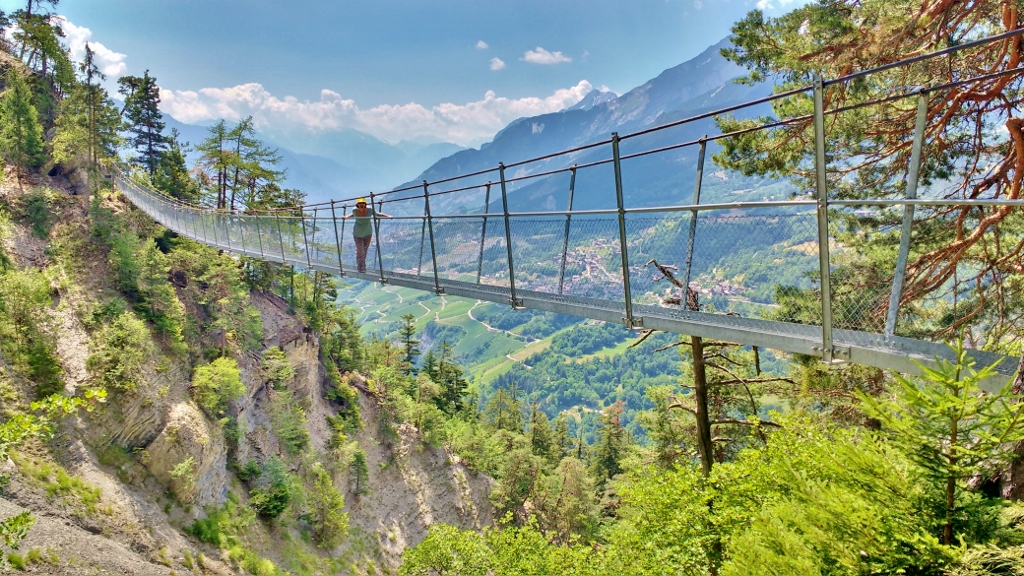


Fascinating. We are in the process of choosing a van. We are juggling between vw camper and a motorhome. Leaning more towards the vw as it will give us the flexibility of a day van. Two adults an 11 year old and two 🐕 could be cosy.
Nailed it David: flexibility is key with the smaller vans, much easier to move around and use day to day. The roads down here in Pembrokeshire aren’t wide so we’re loathe to move our motorhome any more than we need to. That said, the rain’s coming down today and the two of us are very comfortable and spread out in here. Really depends how you intend to use the vehicle. Best of luck, have fun, Jay